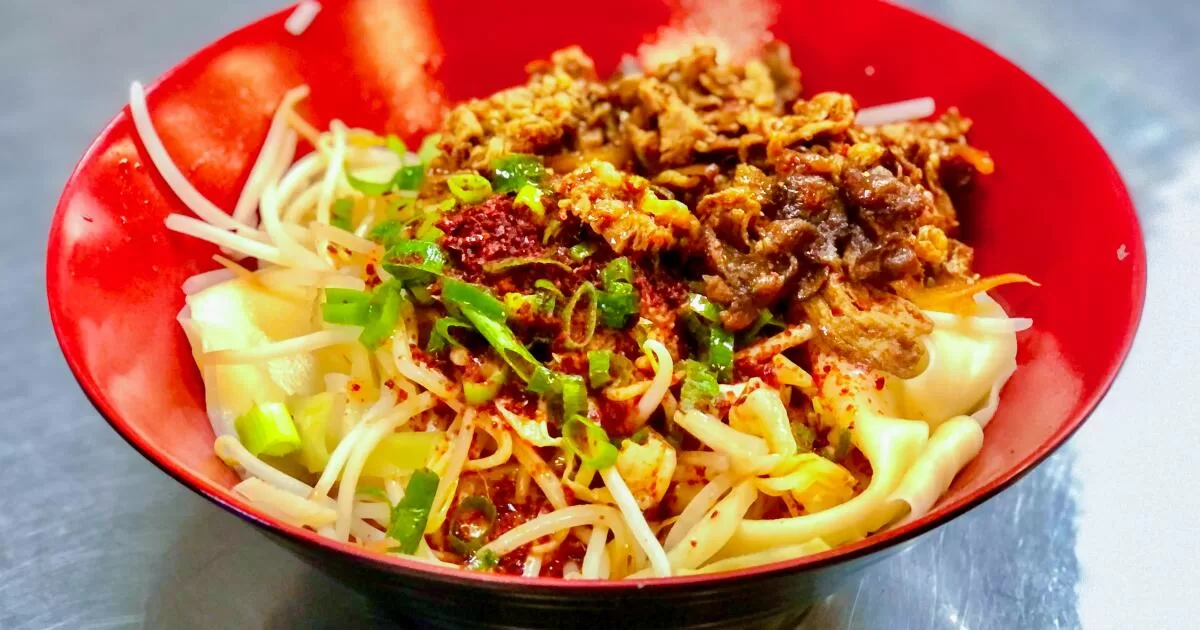The name biang biang noodles, originating from Xi’an, China, refers to the sound of wet dough being slapped against a hard surface when the chef makes them. Biang! Can you hear it?
Xi’an-style restaurants have grown in popularity in the past few years across L.A., as well as in other parts of the country. Since many of the favorite dishes of Xi’an stem from its Muslim quarter, that influence shows up on menus as all manner of skewered meats and vegetables, lots of lamb dumplings, even Chinese haggis, and, of course, biang biang noodles.
Known as one of the “10 strange wonders of Shaanxi,” the northwestern province of China whose ancient capital is Xi’an, biang biang noodles can be as wide as a belt, which is why those serious strands also answer to the name of belt noodles. They’re sometimes listed simply as “handmade noodles” on menus at Shaanxi restaurants. “We didn’t think Americans knew what biang biang noodles are,” says Steven Zhang of Noodle Art in Monterey Park.
Typically, the noodle’s dimensions resemble pappardelle rather than something that keeps your pants up. Also, depending on the restaurant , the noodle in your bowl could be one continuous strand (more than a meter long sometimes), which makes for quite the noodle pull.
According to chefs, the slamming of the strands — made with wheat flour, water and salt — optimizes the noodle’s chew, that desired texture called “QQ.” As soon as the ribbons are formed by freshly smacking the dough on the counter and stretching it by hand, they’re placed into boiling water for a quick dunk.
Cooked and strained, the skeins go into a bowl where aromatic toppings of minced garlic, diced green onions and chile powder are placed on top, then a splash or two of searing hot oil sizzles the trinity into a slick sauce. Add-ons such as cumin lamb, tomato-egg (a scrambled egg with tomato), diced potato or braised pork are common. You can even enjoy rou jia mo, a.k.. Chinese hamburger (although it’s more like an arepa) as an appetizer.
Here are several of the most bangin’ biang biang noodle spots in L.A.
